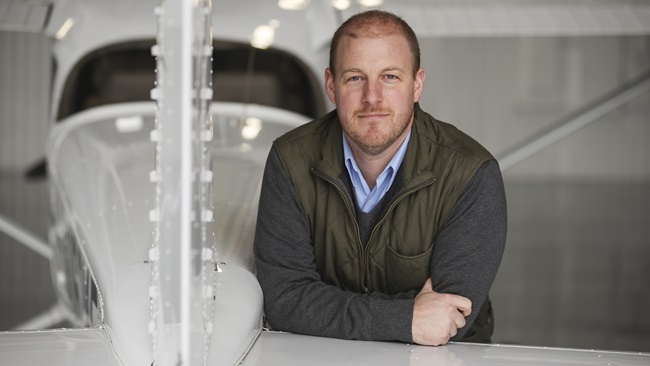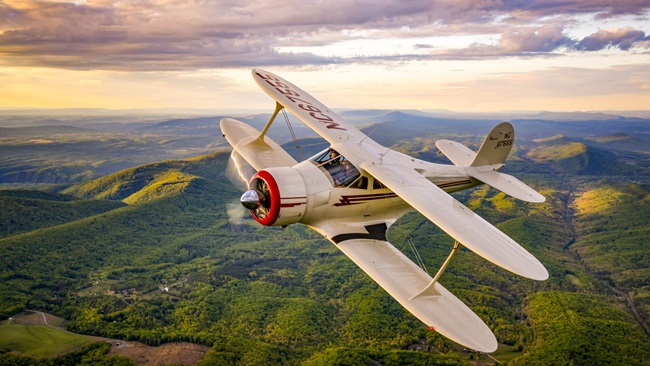South Carolina pilot David Griffin created a miniature airplane factory spanning two local high schools, and showed the students how to build a replica Sopwith Camel that is now on display at the Carolinas Aviation Museum. The three-year project wrapped up about a year ago, and Griffin is still in touch with many of those students.
“Some of the folks we’ve had building the Sopwith Camel project are turning out to be very, very good engineers,” said Griffin, an inductee in the South Carolina Aviation Association Hall of Fame primarily for his efforts in schools—and at local airports—dating back years.
In Connecticut, fellow pilot Greg Castanza has been introducing elementary school students—his sons and their classmates—to aviation with classroom presentations and field trips to the local airport. He is optimistic that at least a few will wind up pursuing aviation careers.
“I bet there’s a lot of pilots out there who could do this and don’t even think of it,” Castanza said.
Across the country, educators and aviators are finding common cause and joining forces in growing numbers to stimulate interest in science, technology, engineering, and math by way of wings. The efforts range from individual pilots like Castanza and Griffin volunteering their time in classrooms to fully fledged high school aerospace programs run by districts or nonprofit organizations that produce airplanes, pilots, and career ambitions across all aviation jobs. AOPA Foundation Vice President Stephanie Kenyon said a 2014 visit to West Michigan Aviation Academy, a tuition-free charter school offering hands-on experience, sparked fresh interest among association leadership in finding new ways for AOPA to support such efforts around the country.
“We were really impressed with the school in Grand Rapids, and as a result, we began looking into other aviation education programs at the high school level,” Kenyon said. “We wanted to learn more about how schools were weaving aviation into their STEM curriculum, and we were energized by what we discovered.”
Fostering collaboration
The association has in recent years posted resources online to help pilots and teachers bring airplanes into the classroom, and launched the AOPA AV8RS teen membership program in 2012. Kenyon said the 2014 visit to Michigan prompted some research that initially found 80 different schools offering some element of aviation in their curriculum.
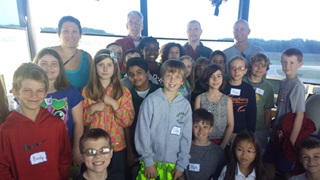
“Since then we’ve built the list up to 180,” Kenyon said, noting that some are well established while others are fledgling programs. “We asked ourselves, 'How do we bring them together so they can learn from each other? How can AOPA help aviation programs at high schools across the country?'"
The result is a new national program whose goal is to build and sustain aviation-based STEM programs that will ultimately provide a quality workforce to the aviation industry.
The AOPA Foundation, the association’s charitable arm which leverages tax-deductible donations to support general aviation, is creating a new program to support aviation high schools in three ways. The first is with the formation of the AOPA High School Aviation Leadership Alliance. On Nov. 9, AOPA will invite school principals and program leaders to a meeting at the Central Florida Aerospace Academy in Lakeland, Florida—a school created and supported by a collaboration between Sun 'n Fun and local educators—to compare notes and learn from one another’s experiences.
The second aspect of AOPA’s new program will establish the first national aviation career club for high school students to help them learn about career opportunities in aviation and aerospace. That will include a Teen Leadership Board, where a select group of AOPA Aviation Career Club members will be chosen to participate in a weeklong summer camp hosted at AOPA headquarters in Frederick, Maryland. Participants will learn about many aspects of aviation advocacy visiting Capitol Hill with AOPA government affairs staff, management and operations through facility tours, aviation history at the Smithsonian National Air and Space Museum, and other hands-on experiences.
The third element to be launched in 2016 is a “booster program” through which AOPA will provide support in the form of modest grants, flight training scholarships, curriculum development and other resources designed to strengthen and grow aviation high school programs.
Kenyon said a recent announcement of these efforts in AOPA Pilot found an enthusiastic audience.
“I’ve received such positive responses from AOPA members,” Kenyon said, noting that she continues to welcome inquiries.
Timing the exposure
Griffin said his personal experience working with students at the elementary, middle, and high school levels over the past decade has led him to conclude that introducing aviation at the right time makes a big difference.
“I concluded that the 7th and 8th grades were the optimum time to get kids really interested,” Griffin said. Younger students are not yet thinking in terms of careers and long-term goals, or ready to grasp the more complex concepts, while high school students not already interested in science and engineering can be hard to reach. Griffin found that middle school students began to pay serious attention after learning about the salaries earned by aviation mechanics and others they met during airport tours.
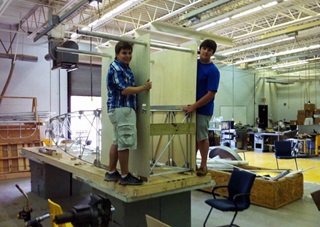
“They got very interested,” Griffin said. “Then if you can do something in the junior and senior years of high school, you’ve by then got a very focused group.”
In Texas, Zaitrarrio (Zay) and Tasha Collier founded Phoenix Arising Aviation Academy in 2008, raising grant funds for the nonprofit and launching after-school and summer youth programs in 2011. (The organization today also serves adults, including pilots seeking to maintain skills with low-cost simulator time.) Zay agreed that while seeds sewn in elementary schools can lead to interest in aerospace, cultivation at the middle and high school levels is where the fruit is produced. His organization serves a mix of students, including economically disadvantaged districts provided with after-school programs that include desktop flight simulation.
“Once we have mastered the basic flight maneuvers, we start taking them around the world,” Collier said. High school students are groomed to help teach younger students, and “they were immersed into this world that 100 percent of them hadn’t been exposed to … that is powerful.”
The Colliers, like many others working along the same lines, developed their own curricula drawing on resources from AOPA, NASA, and universities offering guidance and lesson planning tools.
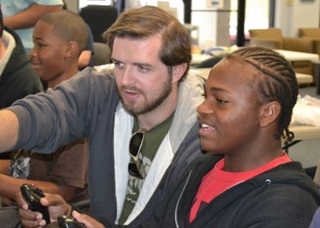
“We’ve grown a lot over the last three years,” Collier said, noting that about 3,200 children and 800 pilots and other adults with an aviation interest have participated to date. A Redbird FMX simulator and 20 desktop stations with screens, yokes, and pedals offer a chance to fly a variety of aircraft; program participants also build model aircraft, and some have been given a chance to go for an airplane ride.
Collier said he’s “extremely excited” about the AOPA effort to facilitate collaboration and help programs secure equipment and other resources. Peder Halverson, who teaches an aviation high school course at the Aviation Museum of New Hampshire, said that program (also a homegrown effort based originally on the NASA Virtual Skies lesson plans) has evolved since it began in 2011, with 10 of 12 original participants completing the class in the academic year that just ended.
“The more I teach this course the more hands on projects I think we need,” Halverson wrote in an email exchange.
Kenyon said AOPA has heard much the same from other organizations seeking to put students in simulators long before they can qualify for a student certificate: There are many more interested students than simulators to go around, and the cost of flight training also remains an obstacle.
“We want to address that,” Kenyon said.
Catching up
Schools are struggling to find space in the curriculum for science, technology, engineering, and math (STEM) education, and the United States continues to lag behind the rest of the industrialized world. This has been detailed in depth by the STEM Education Coalition, which has collected a variety of data, including the bright prospects for those who pursue careers in these disciplines.
AOPA offers resources for pilots and teachers, and the AOPA AV8RS teen membership program offers youth with an interest in aviation opportunities to learn and connect with others.


